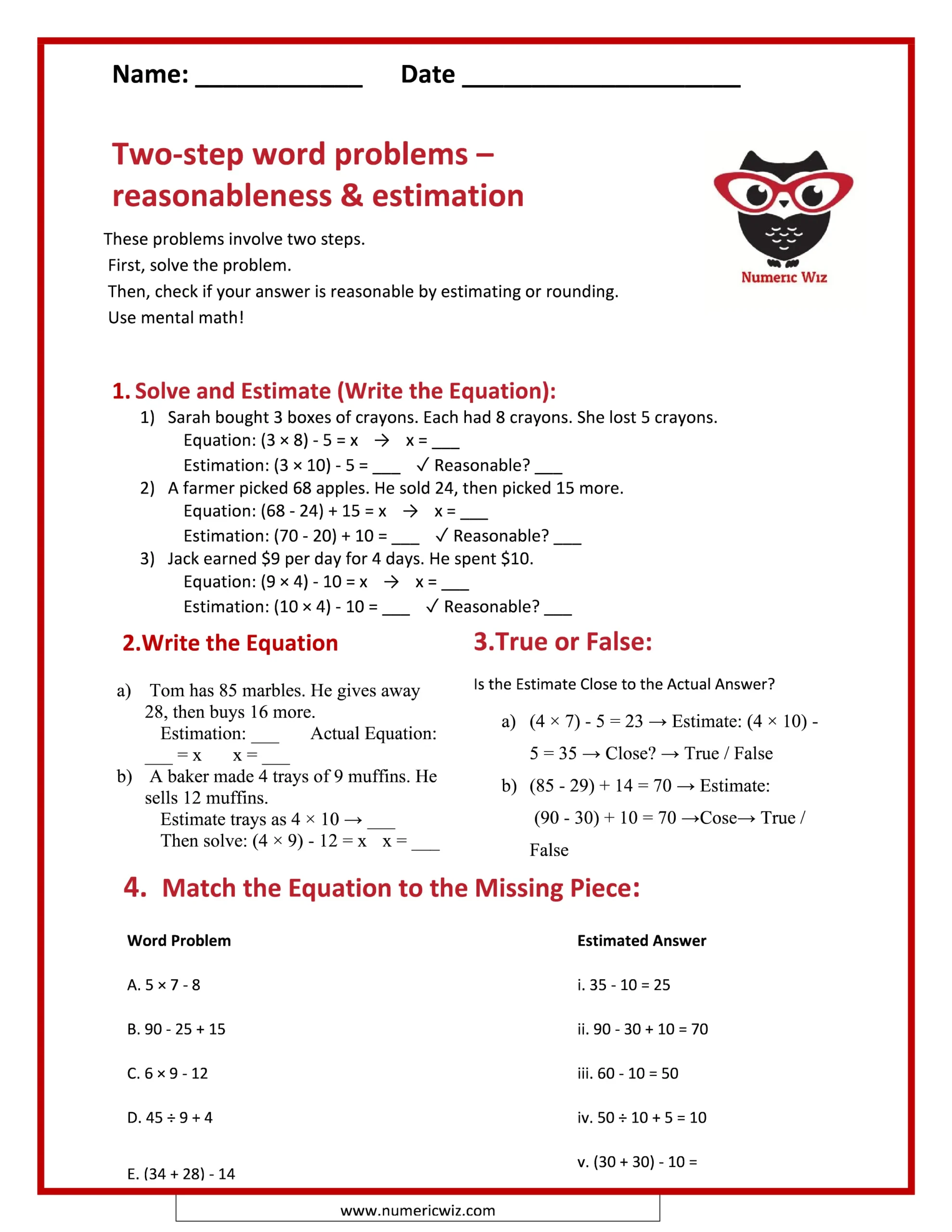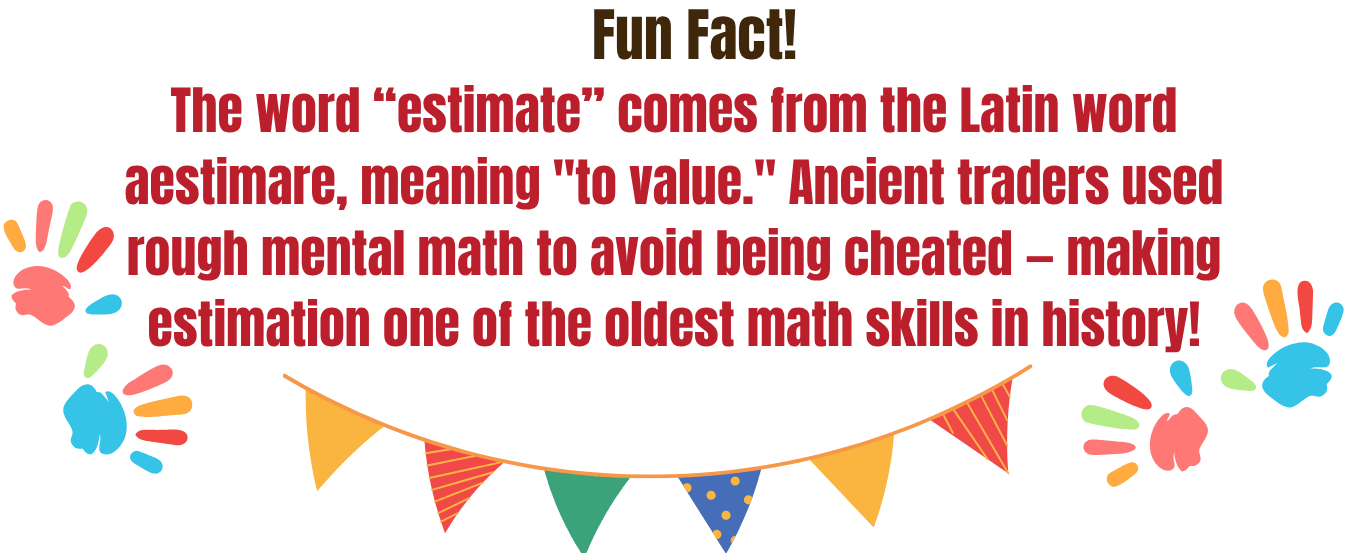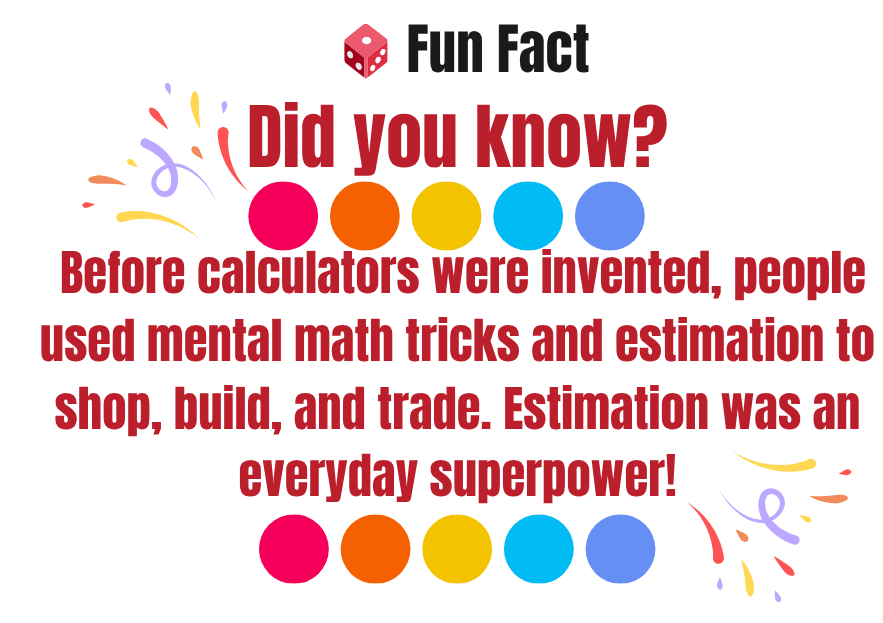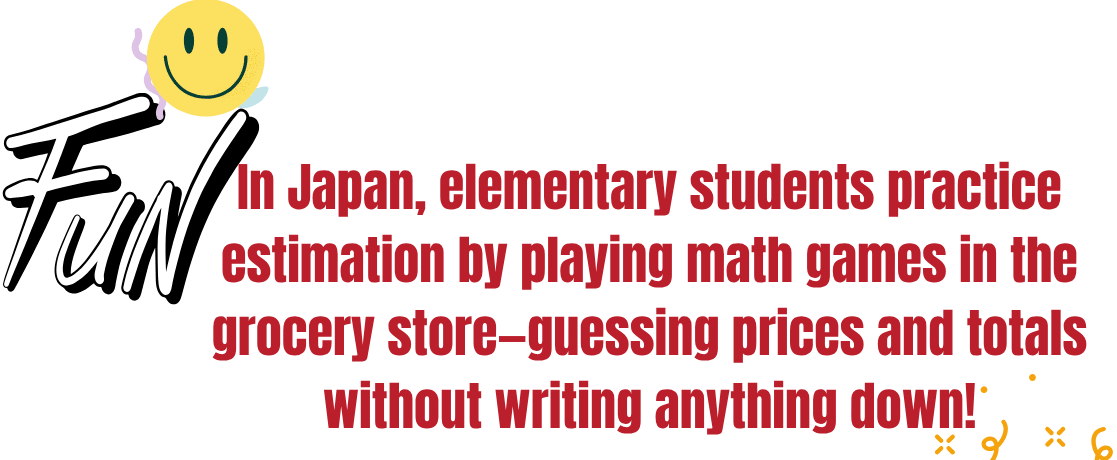Understand and solve two-step word problems
Write math equations based on real-life stories
Use estimation or rounding to check for reasonableness
Spot and correct unrealistic answers
Build confidence in solving without over-relying on calculators

Sometimes in math, one step just isn’t enough.
You might have to find one answer first, then use it to solve another part — that’s what we call a two-step word problem.
But here’s the tricky part: it’s not just about solving it, it’s also about asking yourself,
“Does my answer make sense?”
That’s called checking for reasonableness — and it’s one of the most important habits good problem solvers build. In this lesson, we’ll learn how to solve two-step word problems and use estimation to double-check that our answers feel right.

A two-step word problem is a story problem that needs two separate operations — like addition then subtraction, or multiplication then division — to reach the final answer.
Example:
Amna bought 3 packs of pencils. Each pack had 6 pencils. She gave 5 to her friend.
How many pencils does she have left?
Let’s break it down:
Step 1 – 3 × 6 = 18 pencils total.
Step 2 – 18 − 5 = 13 pencils left.
That’s a two-step problem.
But wait — before we finalize our answer, let’s make sure it’s reasonable.
Reasonableness in math means your answer fits the story and makes logical sense.
If Amna starts with 18 pencils and gives 5 away, ending up with 13 is reasonable.
If you somehow got 53, you’d know something went wrong — maybe a calculation mistake.
To check for reasonableness:
Think about the story: does your answer sound right?
Estimate before solving: round numbers and make a quick mental calculation.
Double-check: does the size of the number make sense for the situation?
This helps you catch errors before you finish — a key skill in both classroom math and real-world problem solving.
Estimation means making a smart, quick guess that’s close to the exact answer.
You don’t have to be perfect — you just want a number that’s in the right range.
Example:
If something costs $48 and you buy 3, you can round to $50 × 3 = $150.
So you know the real answer should be close to $150.
That’s mental math — it saves time, helps check reasonableness, and builds number sense.
Here’s a simple, reliable way to handle two-step word problems with confidence.
Step 1: Read Carefully
Understand what’s being asked. Circle important numbers and underline the question.
Step 2: Plan Your Operations
Ask yourself: “What do I do first?”
Do I add, subtract, multiply, or divide?
Step 3: Solve the First Step
Work out the first part — it often gives you the number you’ll use in the second step.
Step 4: Solve the Second Step
Use your first answer to find the final one.
Step 5: Estimate and Check Reasonableness
Before finalizing, round numbers and do a quick mental estimate.
If your estimate and your real answer are close, you’re probably right!
If they’re far apart, double-check your work.
Hina bought 4 notebooks for $7 each and 2 pens for $3 each.
How much did she spend in total?
Step 1 – Multiply to find notebook cost
4 × 7 = 28
Step 2 – Multiply for pen cost
2 × 3 = 6
Step 3 – Add both
28 + 6 = 34
✅ Answer: $34
Now check reasonableness:
Round 7 → 10, 4 × 10 = 40; pens roughly $6 → total ≈ $46.
Hmm, $34 is a bit lower, but close enough — it makes sense because the real prices were lower than the rounded ones.
Your answer passes the reasonableness check!
A gardener planted 8 rows of flowers with 12 plants in each row. Then 15 plants didn’t grow.
How many plants are healthy?
Multiply: 8 × 12 = 96 total plants
Subtract the dead ones: 96 − 15 = 81 healthy plants
Quick estimation check:
8 × 10 = 80; minus 15 ≈ 65.
Your real answer (81) is close enough, so it’s reasonable — maybe the rounding made it a bit lower.
A bus travels 65 km each trip. It makes 3 trips in a day and refuels with 10 liters after all trips.
How many kilometers does it travel before refueling?
Step 1 : 65 × 3 = 195 km per day
Step 2 : + 10 liters is just refueling info (not needed in calculation)
Total: 195 km
Check Reasonableness:
Estimate 60 × 3 = 180 km.
Actual 195 km — that’s close!
Answer makes sense.
In real life, you don’t always have time to grab a calculator.
That’s why mental estimation and reasonableness checks are real-world survival skills.
You use them when:
Estimating your grocery bill before checkout
Checking if you got the right change
Planning travel times

Managing budgets
Comparing discounts or offers
Math isn’t just numbers — it’s a way of thinking critically and making sure your answers make sense.
Rushing: Students often skip rereading the problem — slow down!
Forgetting Step 2: Remember, two-step means two separate parts.
Ignoring estimation: If your answer seems too high or too low, check again.
Misreading the question: Always underline what’s being asked.
With practice, you’ll learn to spot errors before they happen.
Two-step word problems are more than just math — they reflect real-life logic.
Everyday tasks like budgeting, cooking, shopping, and traveling all involve small “two-step” decisions.
For example:
You plan a trip → estimate time and cost.
You buy groceries → multiply prices, then subtract discounts.
You cook → double recipes, then divide for servings.
You’re already doing two-step math — now you just know how to explain it!
When you solve two-step word problems, you’re not just doing math — you’re thinking critically.
You’re learning to plan, estimate, and check your work like a real mathematician.
Here’s what to remember:
Always read carefully and plan two steps.
Estimate before you calculate.
Check your answer for reasonableness — does it fit the story?
Trust your number sense — if it feels off, it probably is.
Keep practicing, and soon, estimation and reasonableness will feel as natural as counting.

Think you’ve cracked it?
Download the worksheet, solve it, and upload your answers to our “Evaluate Your Work” page. Our awesome teachers will check it and send feedback just for you! Homework has never been this fun—or this helpful!
Make learning meaningful with this classroom-ready worksheet — available now at NumericWiz.com.
For a limited time
